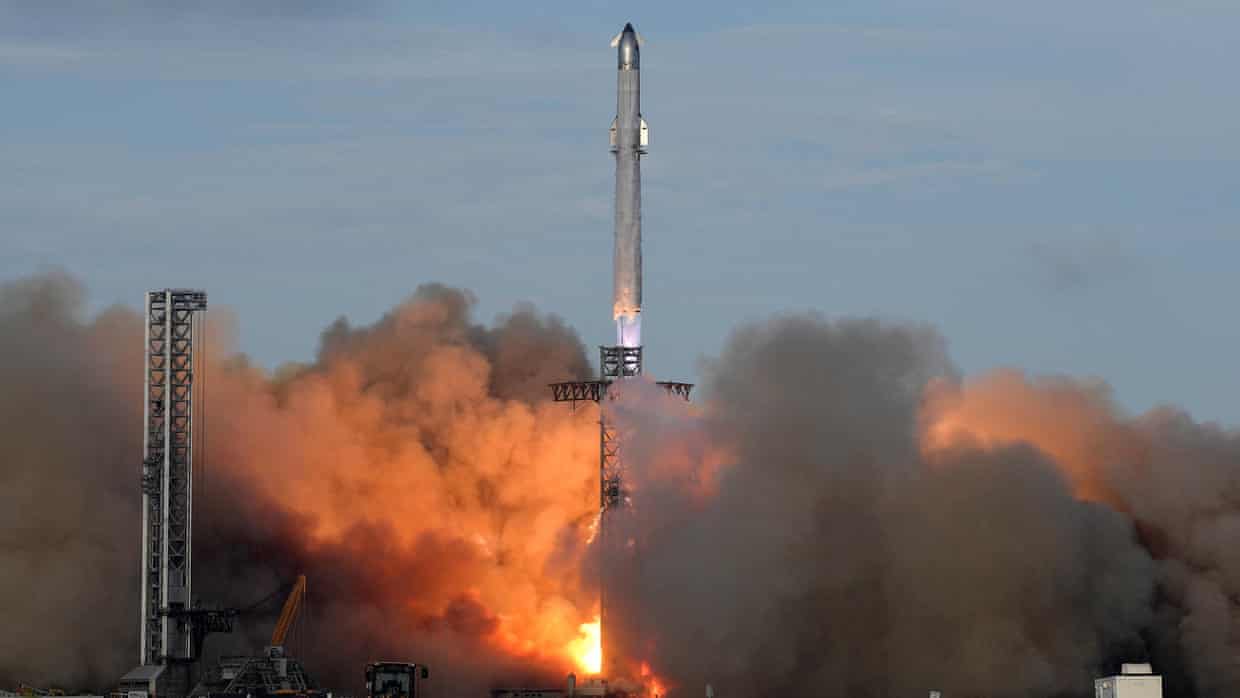Science
SpaceX’s Starship Successfully Launches After Previous Setbacks

SpaceX’s Starship launched successfully on March 10, 2024, marking a significant milestone after two previous launch attempts were scrapped within days. The latest test flight, which is the 10th in a series of trials, aims to validate the capabilities of what is touted as the world’s most powerful launch vehicle. This achievement is critical for fulfilling founder Elon Musk‘s ambitious vision of colonizing Mars and supporting NASA in returning astronauts to the Moon.
The launch took place from Boca Chica, Texas, and was met with great anticipation following a series of explosive failures that had cast doubts on the rocket’s reliability. Each test flight has provided invaluable data, helping engineers refine and improve the design of the Starship. The successful launch on this occasion has reignited optimism about the rocket’s potential and its role in future space exploration efforts.
Technical Details and Future Implications
The Starship is designed to carry both crew and cargo to destinations beyond Earth, including the Moon and Mars. With a height of approximately 120 meters and a payload capacity of over 100 tons, it represents a significant advancement in space travel technology. The test flight involved multiple phases, including liftoff, staging, and re-entry, each of which had been meticulously planned and executed.
SpaceX’s iterative approach has allowed it to learn from previous failures, refining technologies and procedures at a rapid pace. The development of the Starship is seen as a key component of NASA‘s Artemis program, which aims to land the first woman and the next man on the Moon by 2025. Successful testing of the Starship is essential for future missions that could pave the way for human exploration of Mars.
Public and Industry Reactions
The successful launch has garnered praise from various sectors, with industry experts highlighting its significance for commercial space travel. Elon Musk expressed enthusiasm during a post-launch briefing, stating, “Every step we take brings us closer to making life multiplanetary.” The public has also shown renewed interest in space exploration, with many taking to social media to celebrate the achievement.
Critics, however, continue to voice concerns regarding the environmental impact of such large-scale rocket launches. As the space industry evolves, balancing technological advancements with sustainable practices will be crucial.
The successful test flight of SpaceX’s Starship is a pivotal moment in the ongoing quest for space exploration. As preparations for future missions continue, the world watches closely to see how this powerful rocket can transform humanity’s presence beyond Earth.
-

 Technology4 months ago
Technology4 months agoDiscover the Top 10 Calorie Counting Apps of 2025
-

 Health2 months ago
Health2 months agoBella Hadid Shares Health Update After Treatment for Lyme Disease
-

 Health3 months ago
Health3 months agoErin Bates Shares Recovery Update Following Sepsis Complications
-

 Technology3 weeks ago
Technology3 weeks agoDiscover 2025’s Top GPUs for Exceptional 4K Gaming Performance
-

 Technology2 months ago
Technology2 months agoElectric Moto Influencer Surronster Arrested in Tijuana
-

 Technology4 months ago
Technology4 months agoDiscover How to Reverse Image Search Using ChatGPT Effortlessly
-

 Technology4 months ago
Technology4 months agoMeta Initiates $60B AI Data Center Expansion, Starting in Ohio
-

 Technology4 months ago
Technology4 months agoRecovering a Suspended TikTok Account: A Step-by-Step Guide
-

 Health4 months ago
Health4 months agoTested: Rab Firewall Mountain Jacket Survives Harsh Conditions
-

 Lifestyle4 months ago
Lifestyle4 months agoBelton Family Reunites After Daughter Survives Hill Country Floods
-

 Technology3 months ago
Technology3 months agoUncovering the Top Five Most Challenging Motorcycles to Ride
-

 Technology4 weeks ago
Technology4 weeks agoDiscover the Best Wireless Earbuds for Every Lifestyle




















